In the 19th century, many famous Europeans did a lot to promote swimming, including the poet George Byron (1788–1824) and the politician Miklós Wesselényi (1796–1850). Byron drew attention to himself by swimming across the Dardanelles, Wesselényi crossed Lake Balaton. In addition to the importance of exercise, overcoming hitherto unknown distances became exemplary for many in the second half of the century. A crossing of the English Channel, for example, was completed in 1875 by Captain Matthew Webb in 21.45 hours.
The first swimming competitions were held in Hungary in the second half of the 1880s. Until the national sports federations were formed, some sports associations undertook to organise larger competitions and “championships” in all sports that were widespread in Hungary at that time, including swimming. At the beginning of the 1890s, the Hungarian Physical Practitioners' Circle (Magyar Testgyakorlók köre, MTK), and from 1893 the Hungarian Swimming Association (Magyar Úszó Egylet, MÚE) organized these "water competitions."

Alfréd Hajós in 1896
Alfréd Hajós was born in Óbuda under the name Arnold Guttmann on 1 February 1878. His father, Jakab Guttmann, a merchant, and his two brothers, often took him to the Danube, whereas a parent he taught his children to love the water. Among his brothers, Henrik (1886–1963) also stood out in sports, winning a gold medal at the “Panhellenic” Olympic Games in Athens in 1906, on the tenth anniversary of the first modern Olympics.
The Guttmann boys learned to swim in the Scholtz swimming pool on the Danube near the Parliament under construction.
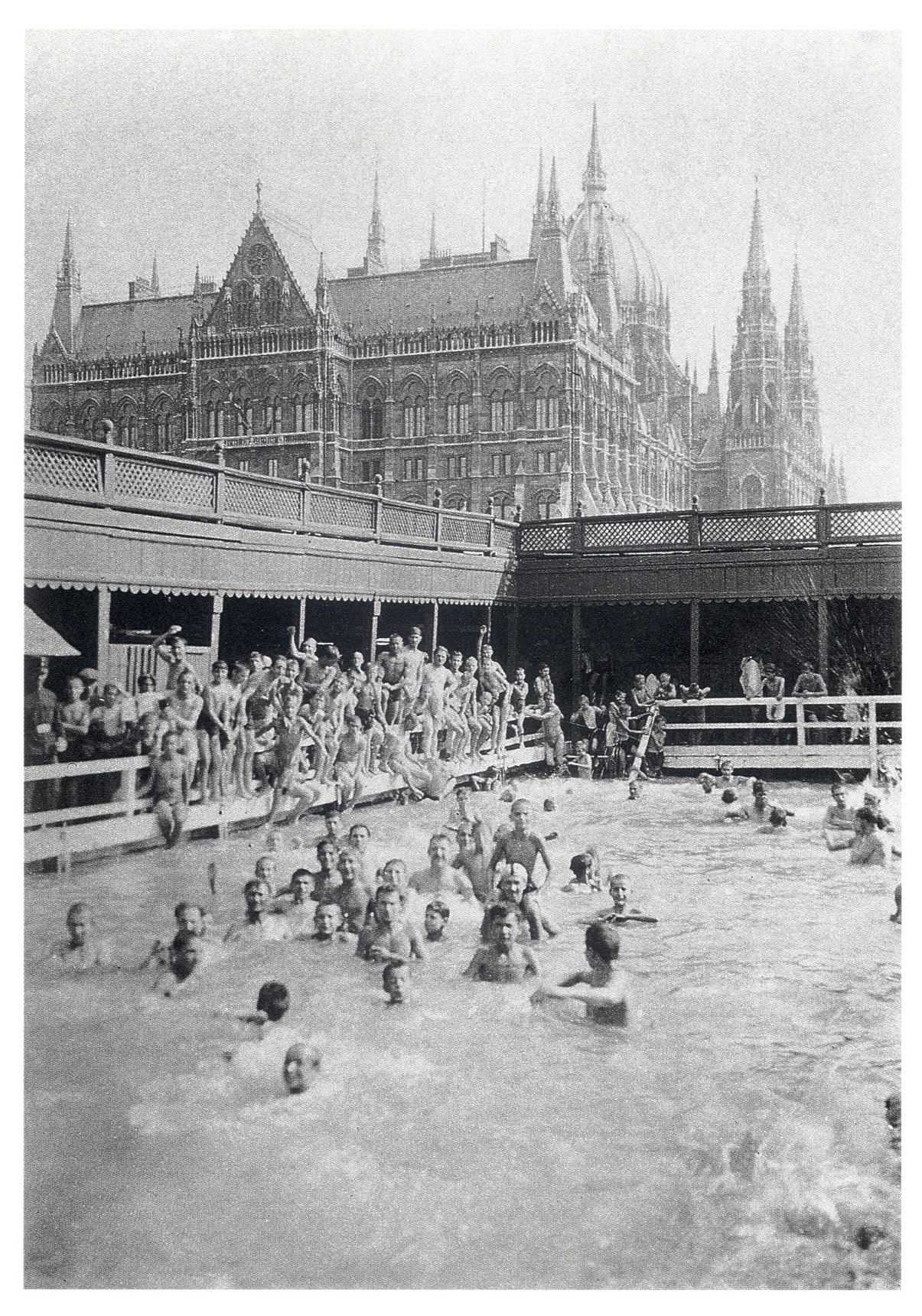
Scholtz's swimming pool on the Danube section next to the Parliament (Source: Parliamentary Library)
At the age of 13, Alfréd Hajós watched as his father was submerged and drowned in the vortex of waves caused by a steamer. The family tragedy did not deter him from swimming; he joined the Hungarian Swimming Association, founded in 1893, at fifteen. He completed his grammar school studies at Markó utcai Főreál Gimnázium, which was a centre of Hungarian sports.
He achieved his first victory as a competitor on 28 July 1895 by winning the 100-meter freestyle competition of the Hungarian Championship in Siófok. This result was followed by several successes in the Austrian and Hungarian competitions, including the – unofficial – continental championship victory in Vienna. After his 100-meter victory at the European Championships in the Austrian capital, the Ministry of Religion and Public Education selected him as one of the three competitors whose travel to the first modern Olympics was financially supported by the ministry. In contrast, other Hungarian athletes' travel expenses were provided for by the capital's sports associations.
Alfréd Hajós prepared for the games in Athens alongside his studies at the Technical University (he studied to be an architect). When the colder weather arrived, he trained every morning in the pool of the Rudas Baths.
In 1896, Budapest was already fuelled by preparations for the National Millennium celebrations. Nevertheless, the world games moved the sports-loving population of the Hungarian capital. Even before the start of the Olympics, the newspaper Sport-Világ announced that telegraph reports from the Athens competitions would be posted in the sports booth of the Nicoletti café on Andrássy Avenue, where anyone could view them. Newspapers in the capital did not feel the sports competitions in Greece were events of such significance as to send independent correspondents to Athens. Thus, these joyful reports on the results of several Hungarians on the podium were not written by journalists but by the Olympians participating in the competitions.
Arnold Guttmann participated alongside Alfréd Hajós in the games held in the Greek capital, where on 11 April 1896, Hajós won the 1,200-meter distance in addition to the 100-meter distance in a race held at sea. He formally applied for a name change in 1907.
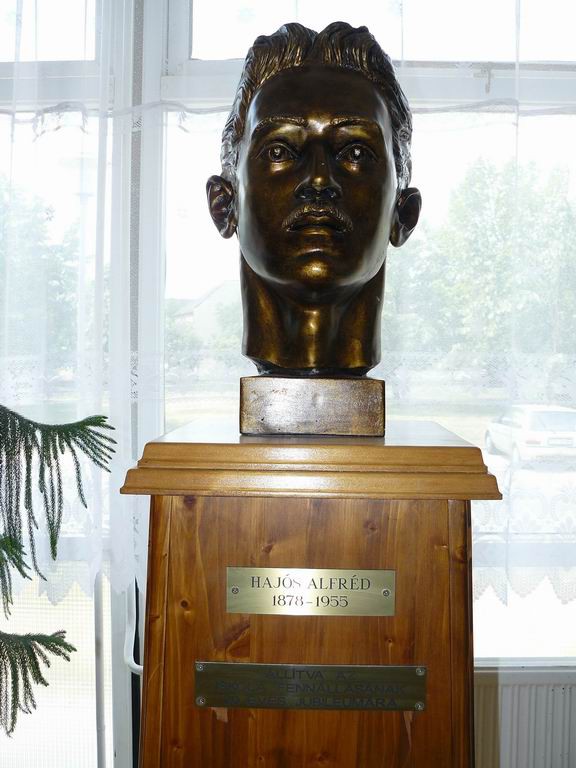
Bust of Alfréd Hajós in the primary school of Pesterzsébet bearing his name (Photo: pesterzsebetihajos.hu)
Alfred Hajós describes the story of his victory at length in his book “How I Became an Olympic Champion”, written in 1955 and published in 1956. In short, he recalled it to the press in the following words:
“The venue for the race was Phaleron next to the Gulf of Piraeus, where on the day of the race, about forty thousand people stood around the shore, anxiously awaiting the results of the swimming sport unknown to them. In April, the weather was unusually cold at the time, and the seawater also cooled a lot, so the water temperature was 13 degrees on the day of the race. All swimming events were conducted in the morning. Thirteen of us started in the 100-meter race. Among them, just to my right, Williams, an excellent U.S. racer, got into the water from the start-up boat. The freezing cold water almost hurt. We had a huge head-to-head fight for seventy meters, where I was able to push more and win the race.”
At the Athens Olympics, the winners, including Alfréd Hajós, were awarded silver medals.
After his success at the Olympics, Alfréd Hajós only took part in swimming competitions for a short time and transitioned to other sports. In the 1890s, he was successful in several athletics and gymnastics competitions. He also played a significant role in the introduction of football in Hungary.
%20%20Haj%C3%B3s%20Alfr%C3%A9d%20%C3%A9s%20Vill%C3%A1nyi%20J%C3%A1nos%20tervezte.jpg)
The synod headquarters of the Hungarian Reformed Church (16th District, 21. Abonyi Street) was designed by Alfréd Hajós and János Villányi (Photo: contemporary postcard)
Simultaneously with his diverse sports career, he studied architecture at the Hungarian Royal József Technical University between 1895 and 1899. After graduating, he first worked as a subordinate of Ignác Alpár and then of architect Ödön Lechner. Associated with János Villányi, he opened an independent architectural office in 1904.
Their office's first major order was to design the Synod headquarters of the Hungarian Reformed Church in 1907. The imposing Zugló headquarters, which bears the hallmarks of both historicism and Art Nouveau, was built in 1909.
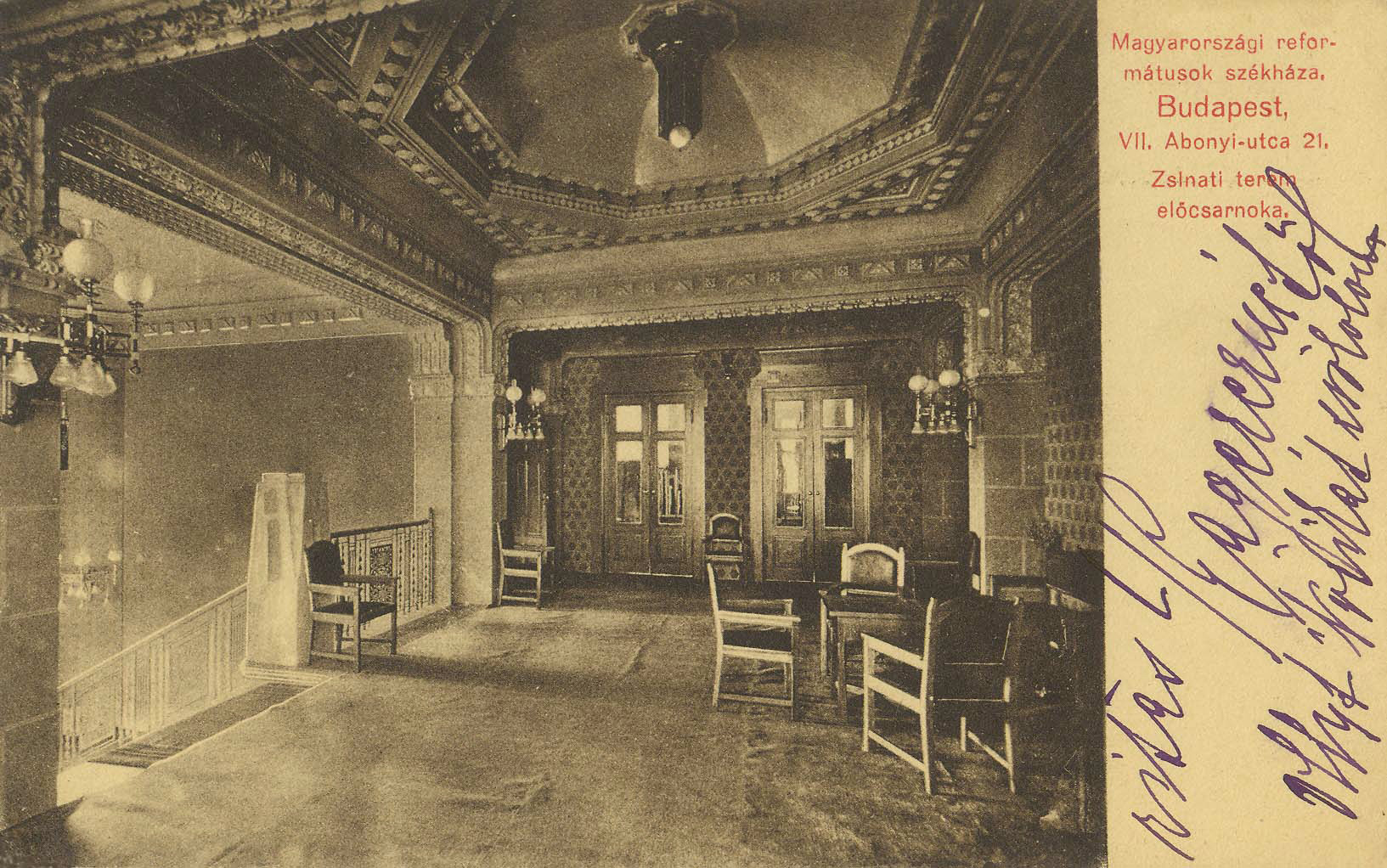
Lobby of the Synod Headquarters in 1910 (Photo: contemporary postcard)
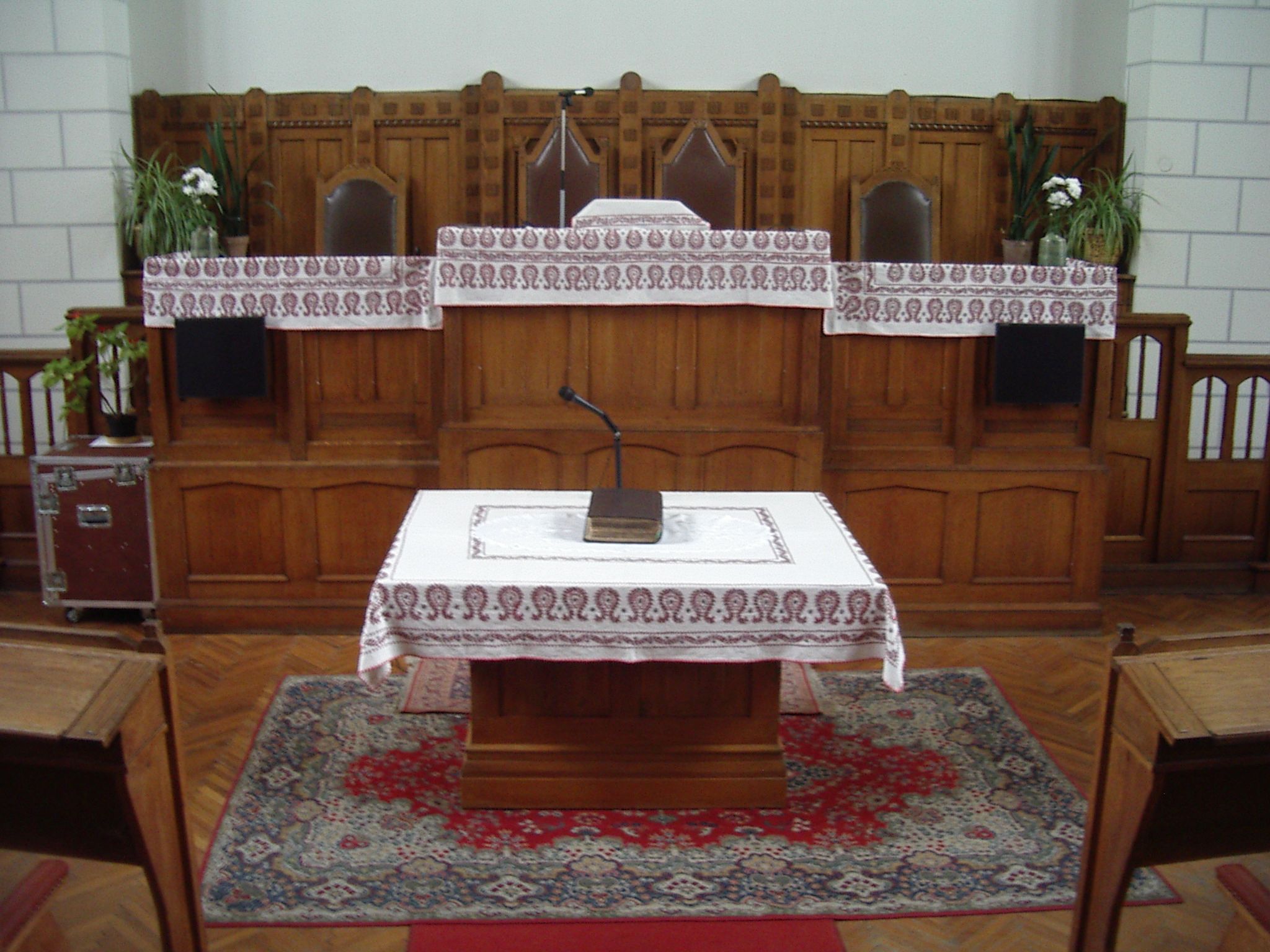
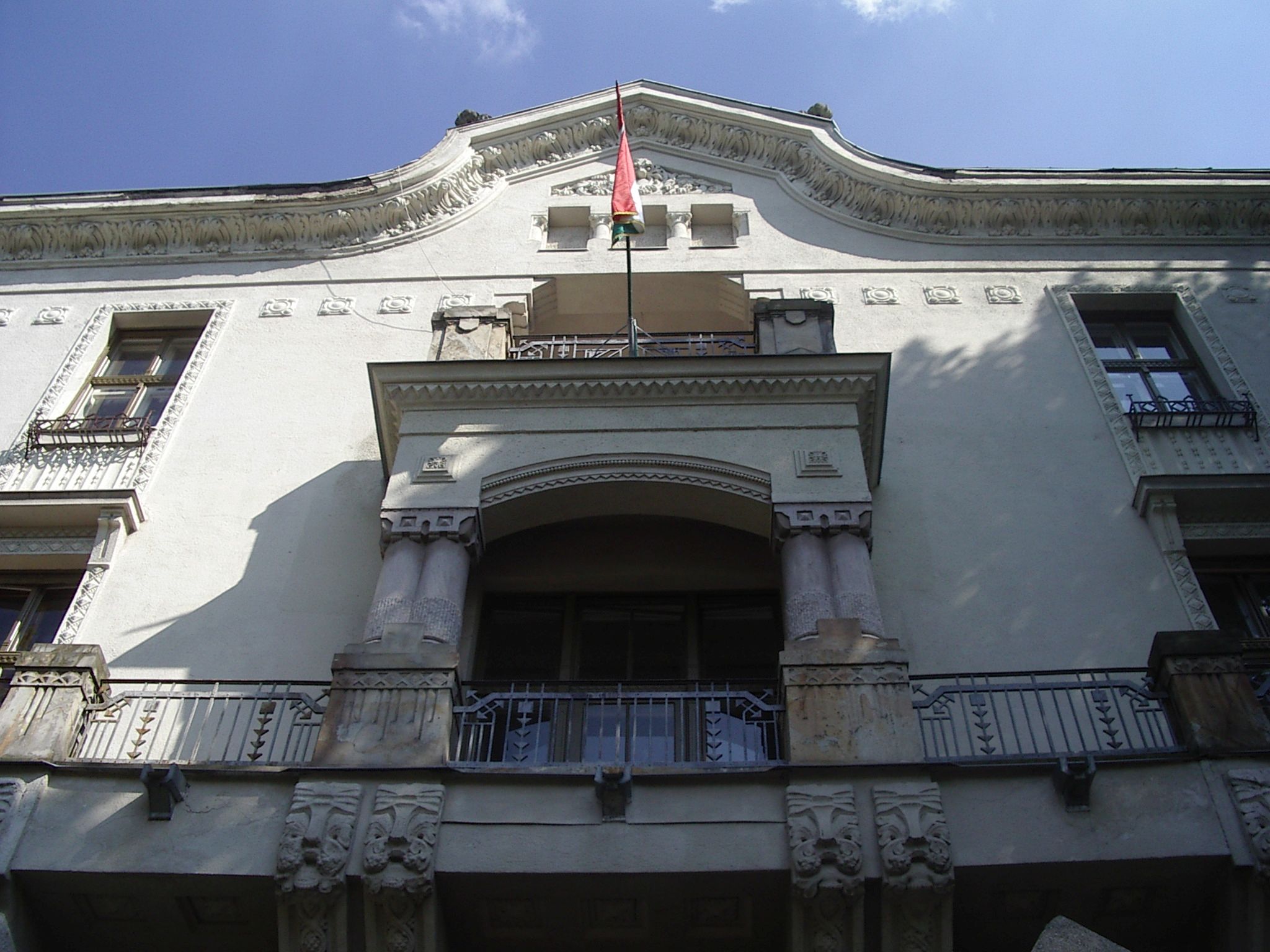
Synod Headquarters of the Hungarian Reformed Church designed by Alfréd Hajós and János Villányi (Photo: Máté Millisits / pestbuda.hu)
From the beginning of the 1920s, he was responsible for designing facilities for sports purposes, leading an independent architectural office. The swimming pools of Győr, Szeged, and Miskolc were built according to his plans. In the category of intellectual achievements, he won a silver medal at the Paris Olympics in 1924 with his stadium design prepared jointly with architect Dezső Lauber (1879–1966).
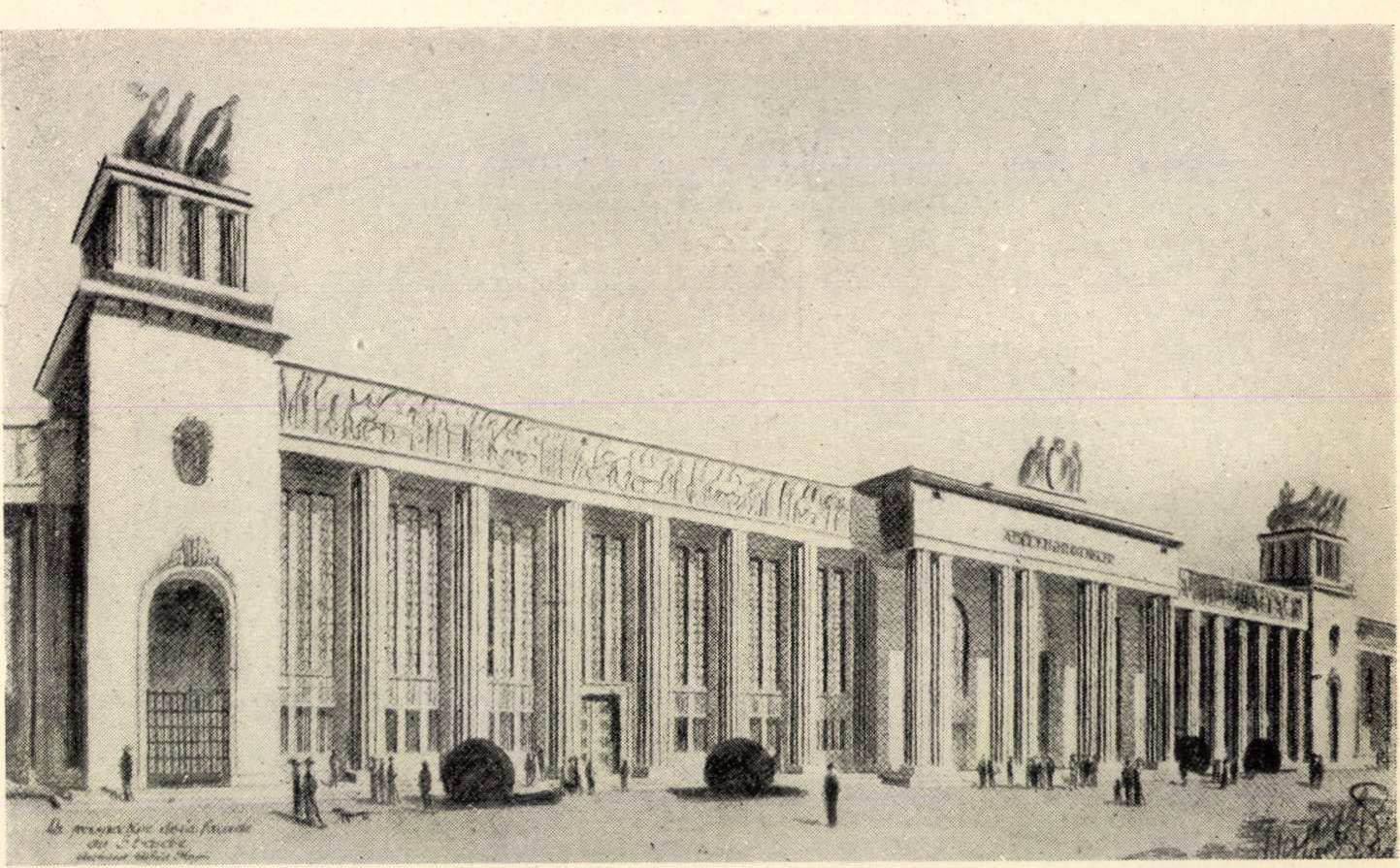
Alfréd Hajós' stadium design won a silver medal in the category of intellectual achievements at the 1924 Paris Olympics (Source: Alfred Hajós: How I became an Olympic champion, 1956)
The National Sports Swimming Pool, built on Margit Island in December 1930, is considered his most significant work. After the formal opening of the swimming pool, Alfréd Hajós was awarded the title of Chief Government Adviser.
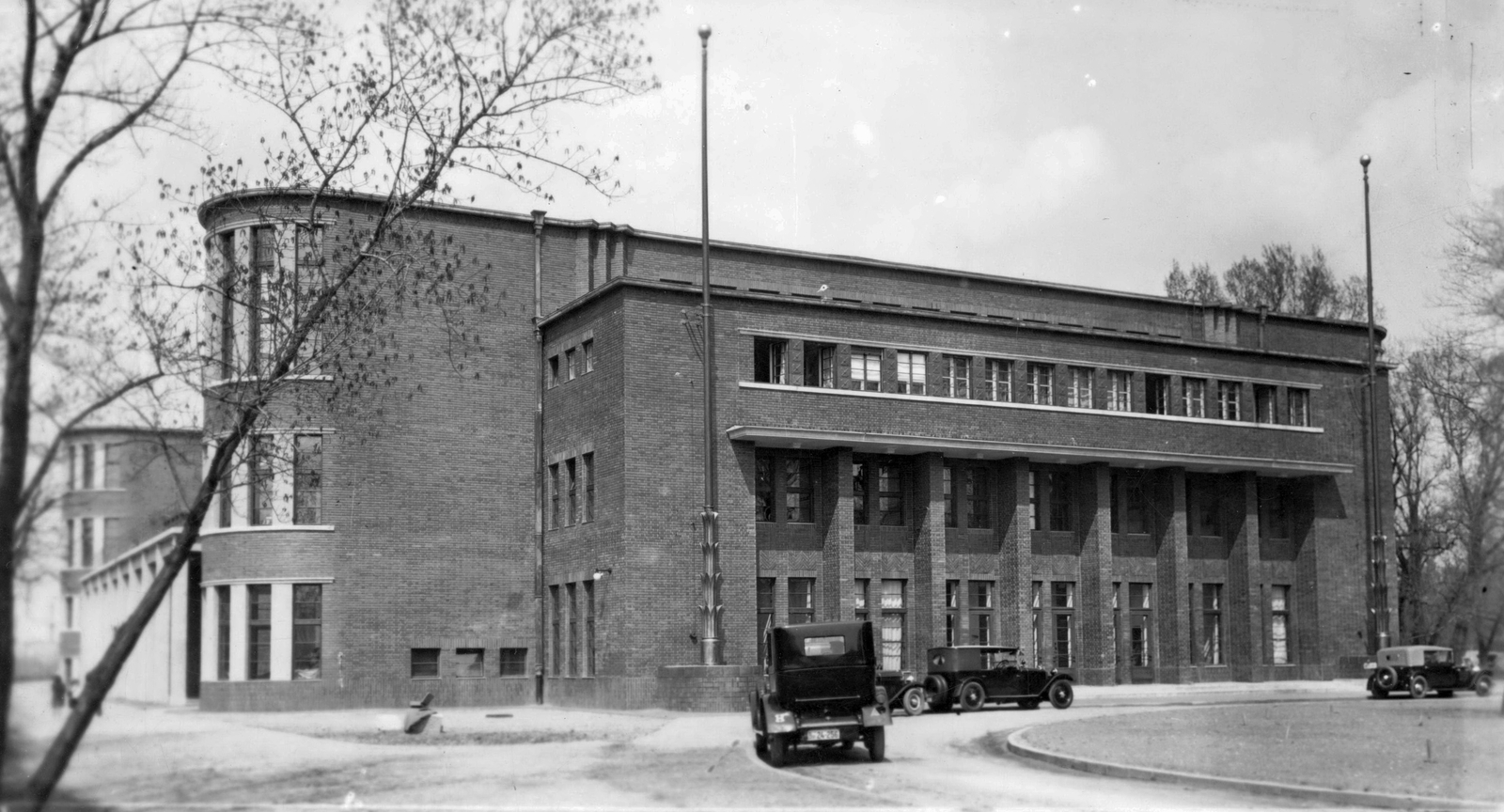
The Alfréd Hajós National Sports Swimming Pool in 1931 (Photo: Fortepanó/No.: 58265)
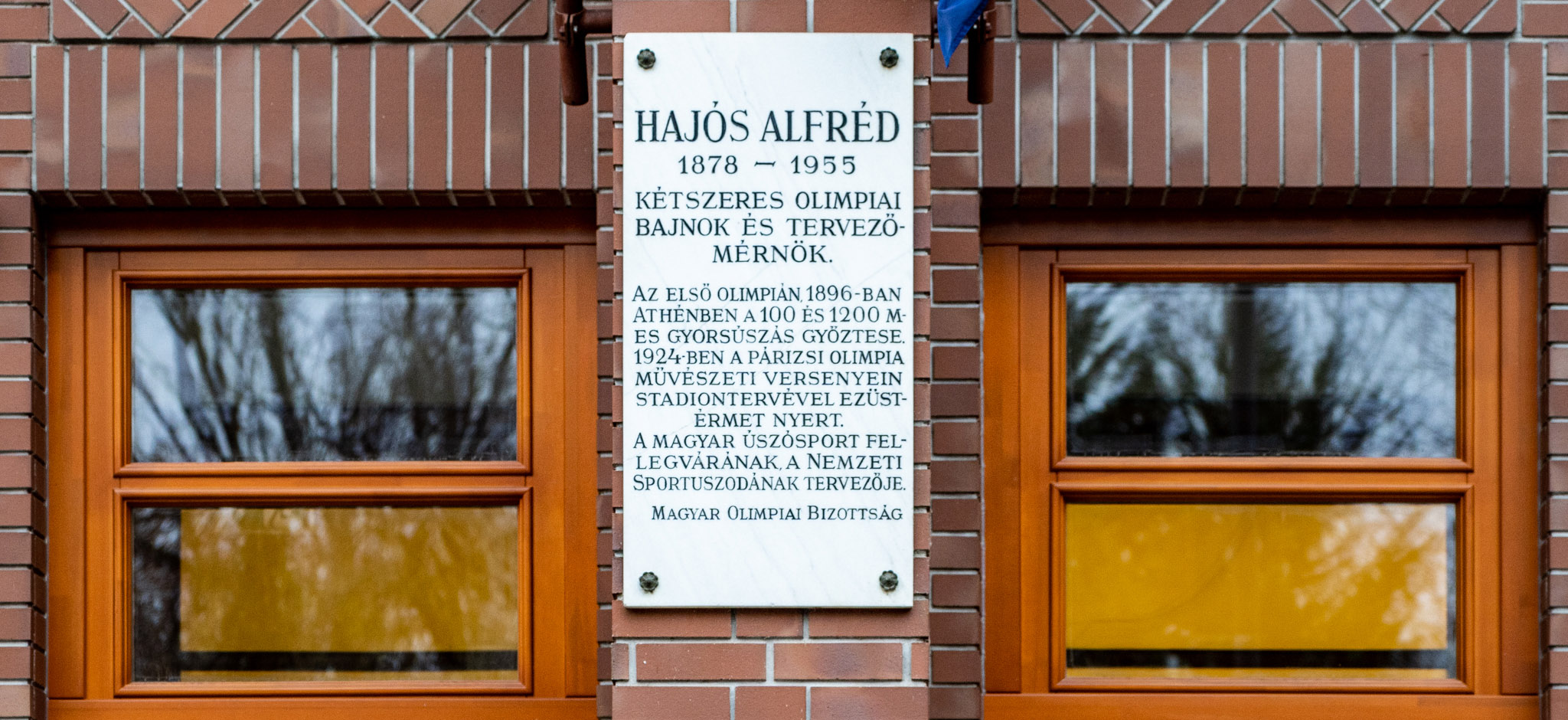
Memorial plaque on the wall of the National Sports Swimming Pool (Photo: Both Balázs/pestbuda.hu)
He was elected director of the Hungarian Olympic Society, founded on 27 April 1932.
In the darkest period of the Second World War, during the Holocaust, after Hungary's occupation by the army of the Third Reich, Alfréd Hajós obtained a certificate of protection for endangered Hungarian Olympic champions of Jewish descent towards the end of 1944.
In 1953, the International Olympic Committee awarded him an Olympic Diploma for his diverse oeuvre in the service of the Olympic ideal. In the last phase of his life, from 1950 to 1955, he worked as a designer for the Mezőterv (Field Plan) Company.
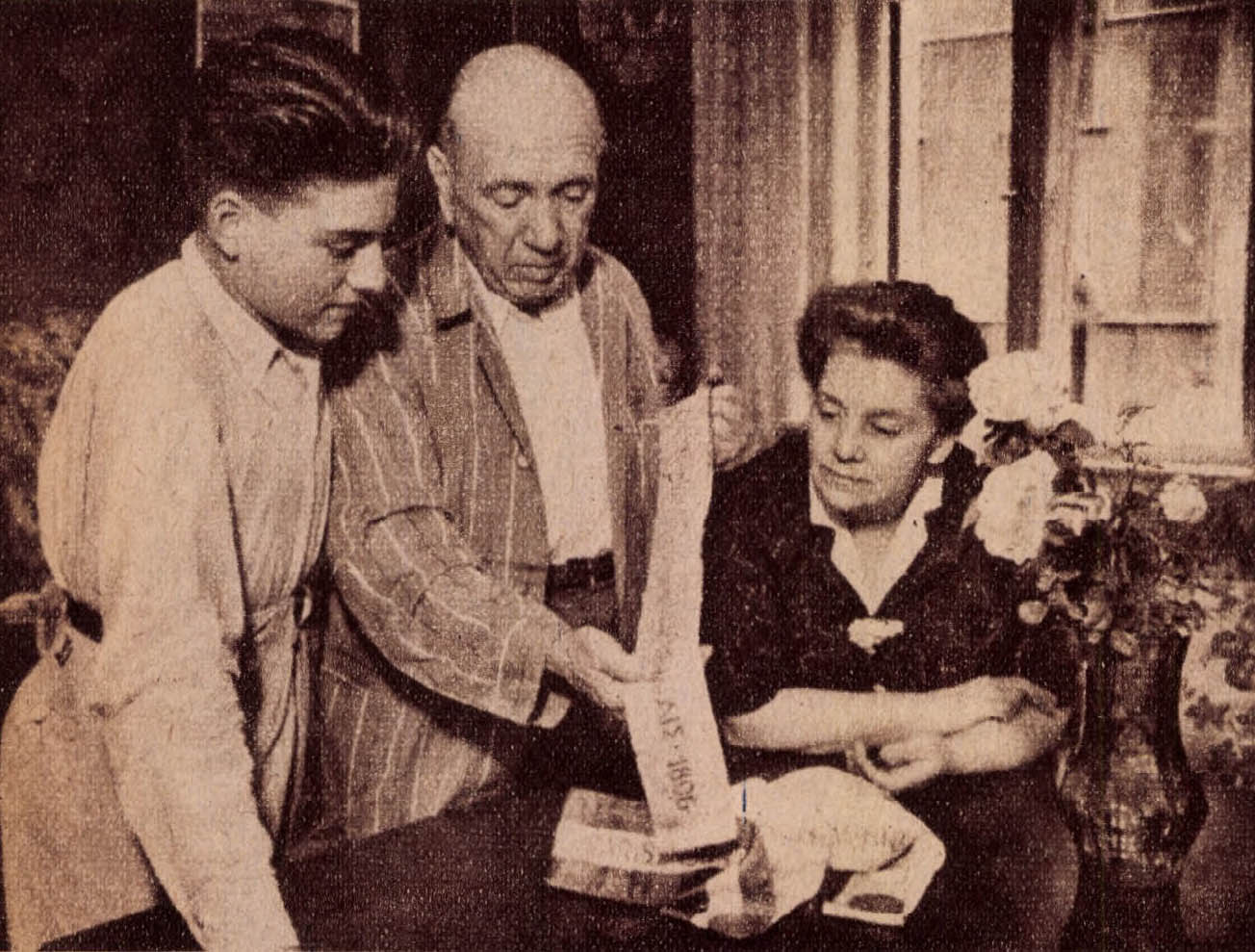
Alfréd Hajós shows his wife and granddaughter Olympic medals (Photo: Képes Sport, 10 May 1955)
After his retirement, he died on 12 November 1955 and is buried in the imposing tomb of his wife’s family, the Blockner family, in the Jewish cemetery on Kozma Street. The family tomb, built of marble slabs, is crowned with the five-ring symbols of the Olympics made of iron and the Olympic symbol of a burning torch.
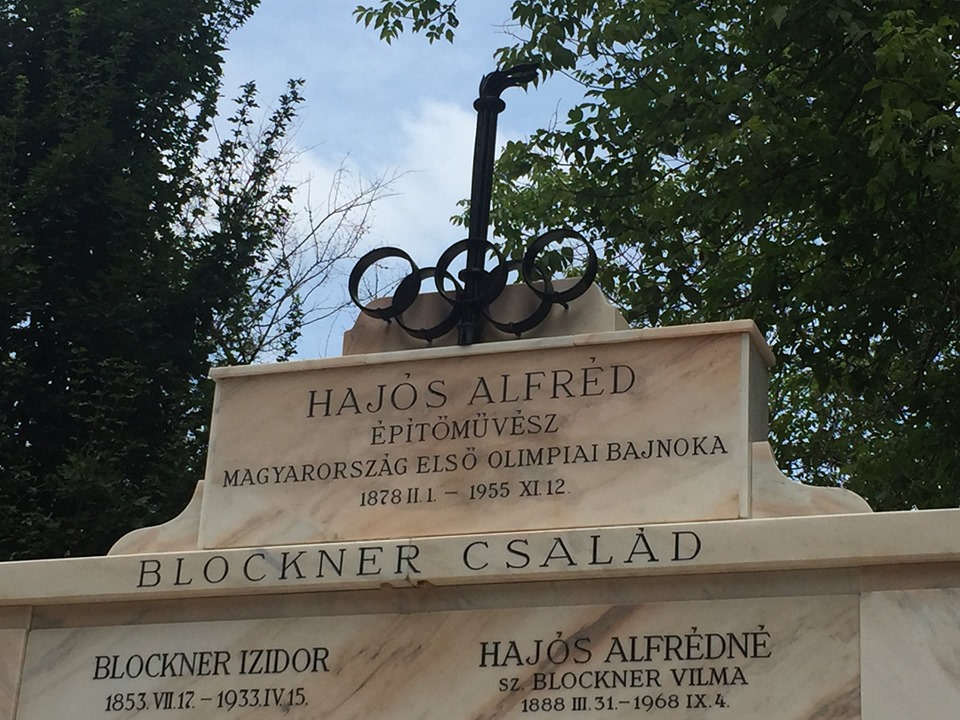
The family tomb is crowned with the five-ring symbols of the Olympics made of iron and the Olympic symbol of a burning torch (Photo: National Heritage Institute)
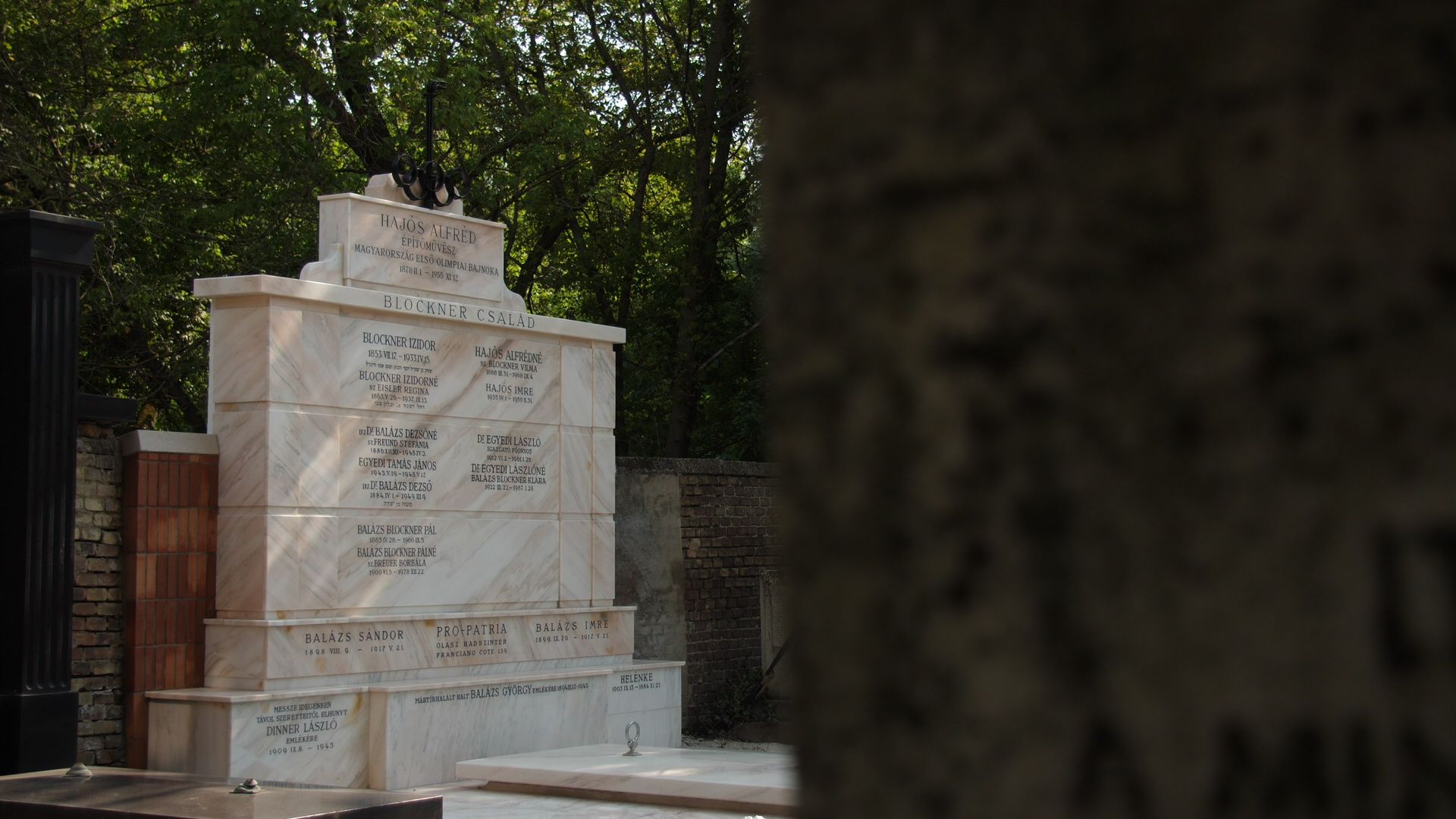
The tomb of Alfréd Hajós, the first Hungarian Olympic champion, renovated in 2019 (Photo: National Heritage Institute)
In 1966, the General Assembly of Budapest Council named the promenade next to the National Sports Swimming Pool the Hajós Alfréd Promenade.
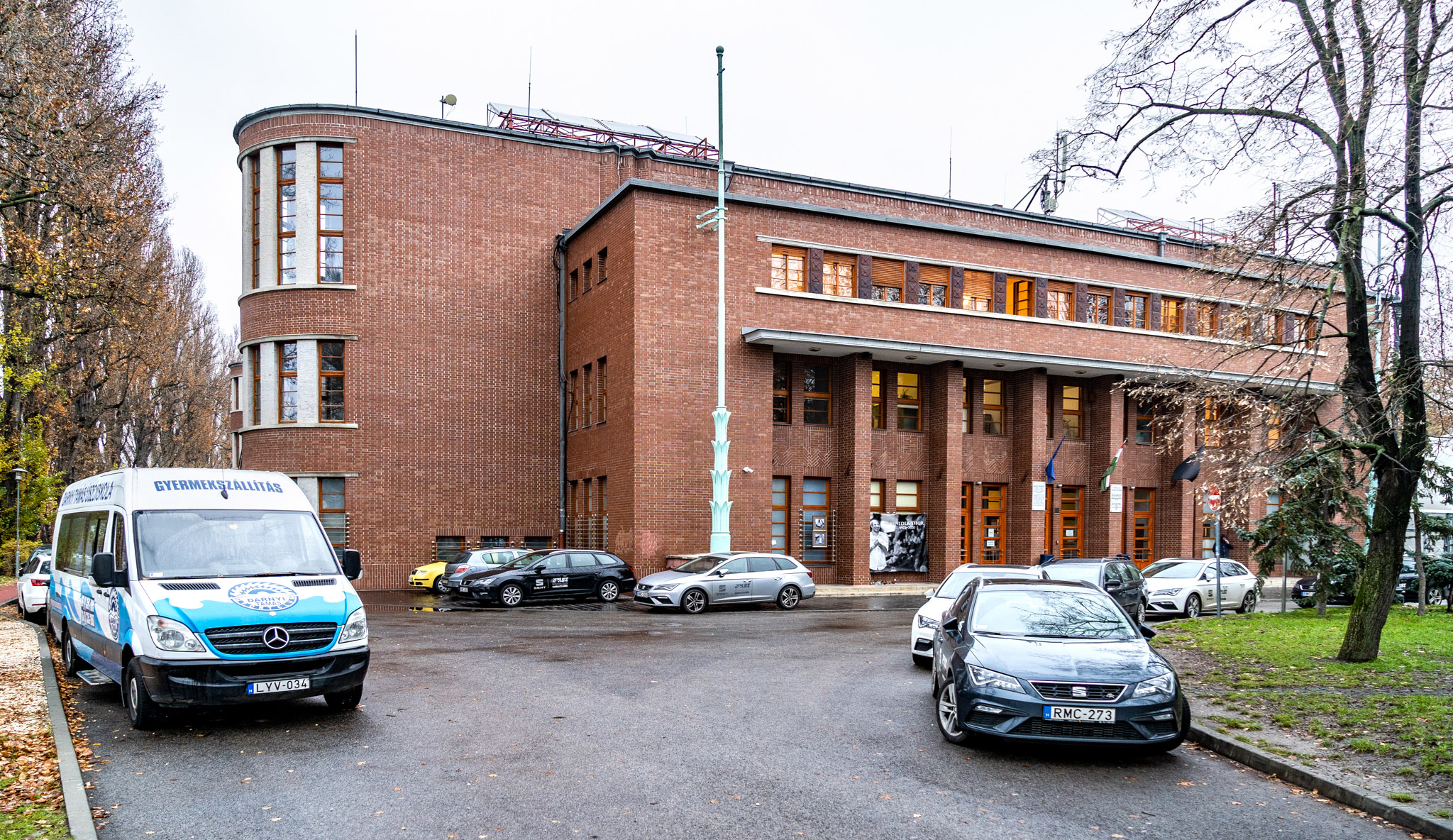
The Hajós Alfréd National Sports Swimming Pool today (Photo: Both Balázs/pestbuda.hu)
Alfréd Hajós' Olympic victory in the Hungarian capital is advertised by several plaques at the University of Physical Education, in the Lipótváros Olympic Park, in the lobby of the Hajós Alfréd National Sports Swimming Pool.
In addition to the bronze bust of water polo coach Béla Komjáti (1892–1933) in the swimming pool, that of Alfréd Hajós is reminiscent of the two exemplary representatives of Hungarian water sports. The bust of the first Olympic champion was modelled in 1955 by the sculptor József Reményi (1887–1977).
In 1966, Alfréd Hajós was the first Hungarian athlete to be elected a member of the International Swimming Hall of Fame.

The memorial to Alfréd Hajós in the Budapest Olympic Park in its old condition in 2012, the park and the memorial stones were rebuilt in 2014 (Photo: Máté Millisits/pestbuda.hu)
The Association of Hungarian Architects and the Museum of Physical Education and Sports placed a memorial plaque on the wall of the Báthory residential building, his former residence in the 5th District. He died in 1968, and the Hungarian state purchased the apartment on Báthory Street for the Museum of Physical Education, which was created at the time. The institution operated in the former flat of Alfréd Hajós for almost ten years, among the Olympic champion's furniture.
On the centenary of his Olympic victory, in 1996, his work, which enriched Hungarian culture as both a sportsman and an architect, was recognised with the Hungarian Heritage Prize, and in 2010 he received the posthumous Ybl Prize.
Educational institutions also adopted the first Hungarian Olympic champion's name in the capital in Zugló and Pesterzsébet. The bust of Alfréd Hajós, made by the sculptor József Huber, was unveiled in Budafok in 2002 at the primary school that bore his name at the time, but which later took on the name of the Olympic champion canoer, György Kolonics, who died tragically in 2008. In Budafok, however, a public institution still preserves the name of Alfréd Hajós: the swimming pool at 24 Vasvári Pál Street.
Alfréd Hajós' first full-length public sculpture is planned to be erected on Margaret Island near the sports pool he designed. The results of the sculpture design competition announced by the Hungarian Jewish Cultural Association in December 2020 are expected to be published in the coming months.
Cover photo: 125 years ago, the excellent athlete, also called the "Hungarian dolphin", became a two-time Olympic champion.

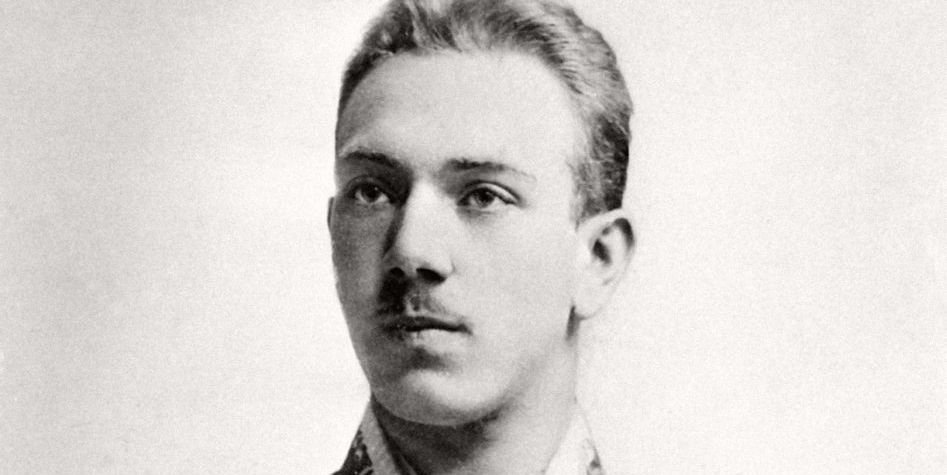
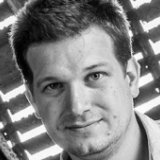


































Hozzászólások
Log in or register to comment!
Login Registration